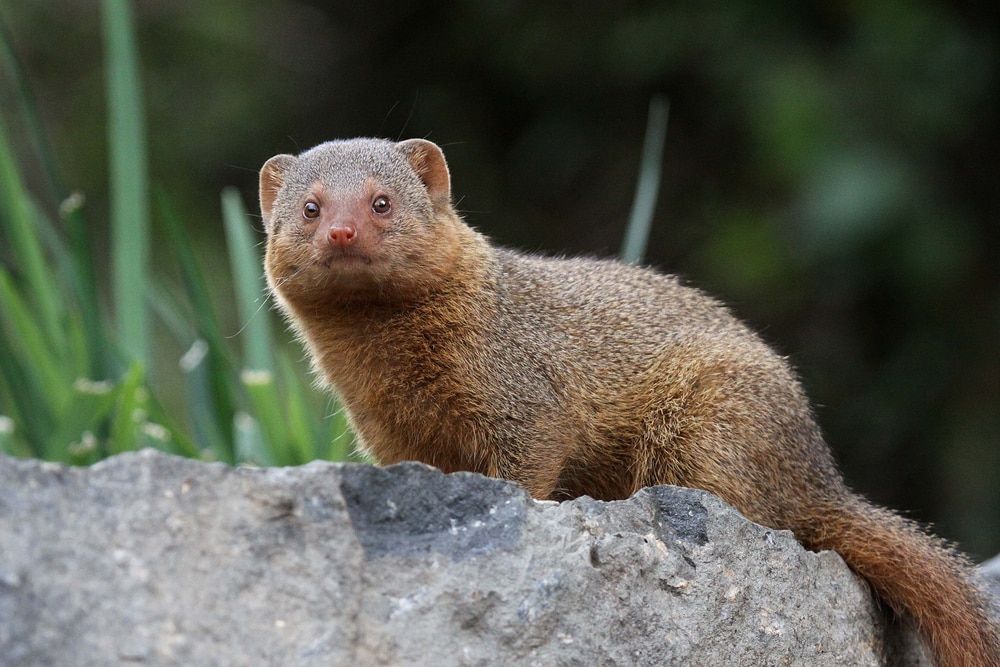
Mongoose may be famous now for the snake-fighting abilities on display in the Rudyard Kipling story “Rikki-Tikki-Tavi,” but the cute little creatures were once thought of as a pest control option. Before we had better technology for controlling pest animals, more natural techniques were used.
As trade routes spread across the globe, agricultural products gained massively in value. These crops needed to be protected to ensure profits for trade companies. Without our modern-day understanding of the ecological impact invasive species carry and with a lack of options, people used to introduce new species to areas to solve their problems.
Before we get into how mongooses even got to Hawaii, it’s best to learn about mongooses in general.
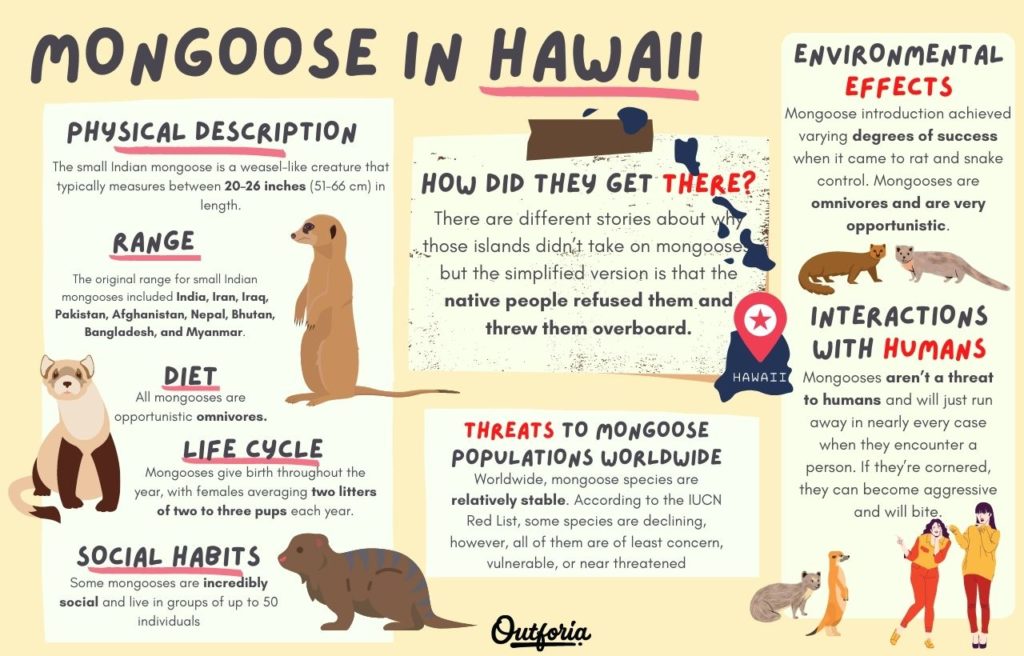
Quick Lesson About Mongooses
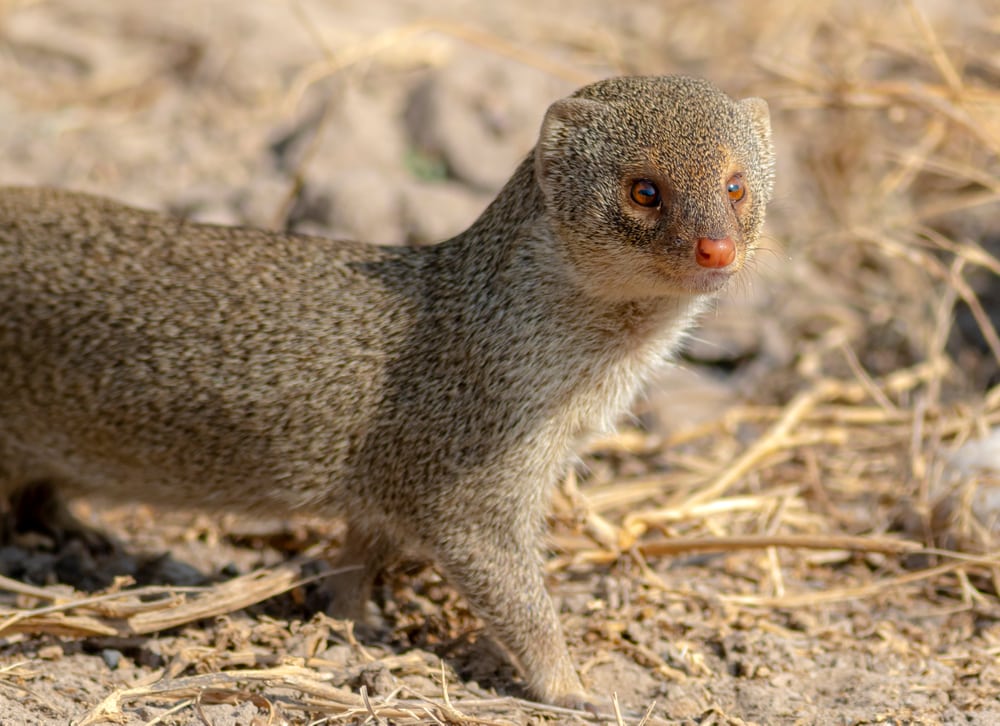
Worldwide there are 34 species of mongoose found across Southern Europe, Asia, and Africa. For the purpose of this article, we’ll be looking specifically at the small Indian mongoose, the species that can be found in Hawaii.
Physical Description
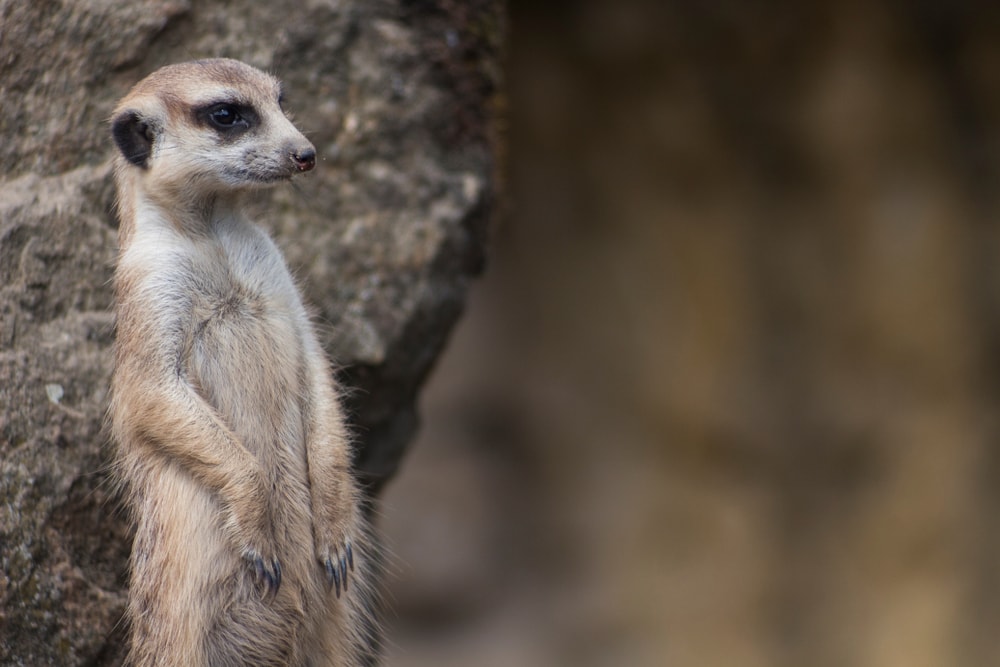
The small Indian mongoose is a weasel-like creature that typically measures between 20–26 inches (51-66 cm) in length. They have a long slender body and elongated snout, with males generally having a wider head and thicker body than females.
Each foot has five toes with sharp, non-retractable claws. Their fur is soft and ranges from a pale brown to dark brown, with golden flecks littering their body. Their belly will generally be a lighter color than the rest of their body.
Adult mongoose can weigh anywhere from 300 grams to one kilogram (0.5-2 pounds). Males weigh more than females and the species displays a sexual dimorphism through the size difference between genders.
Range
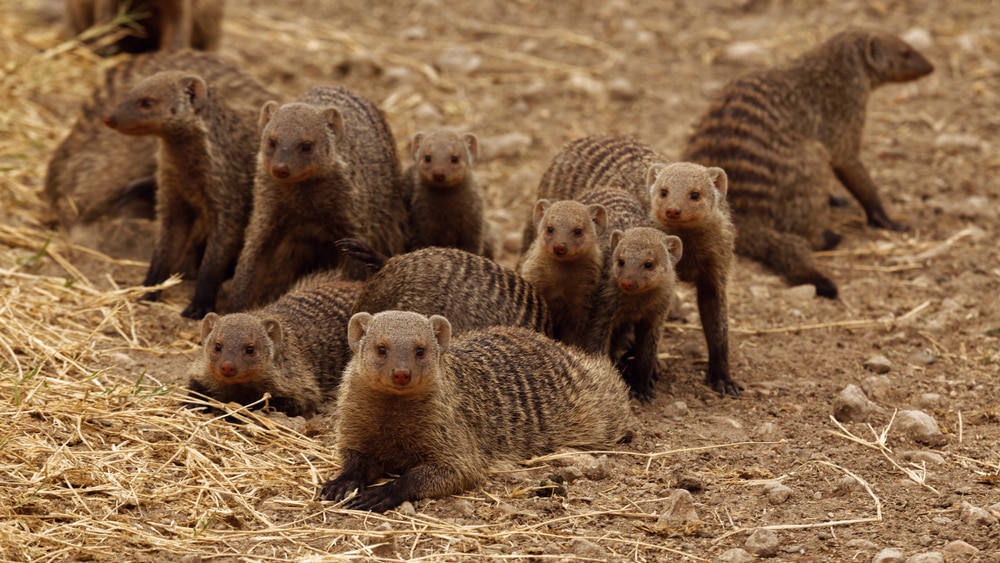
The original range for small Indian mongooses included India, Iran, Iraq, Pakistan, Afghanistan, Nepal, Bhutan, Bangladesh, and Myanmar. The species has also been introduced to areas of southern Europe, the Caribbean, and islands in the Pacific Ocean.
Across their natural range, the International Union for Conservation of Nature’s Red List identifies the mongoose as a species of least concern, meaning they aren’t in danger of extinction. The European Union has listed them as alien invasive species across Europe.
Diet
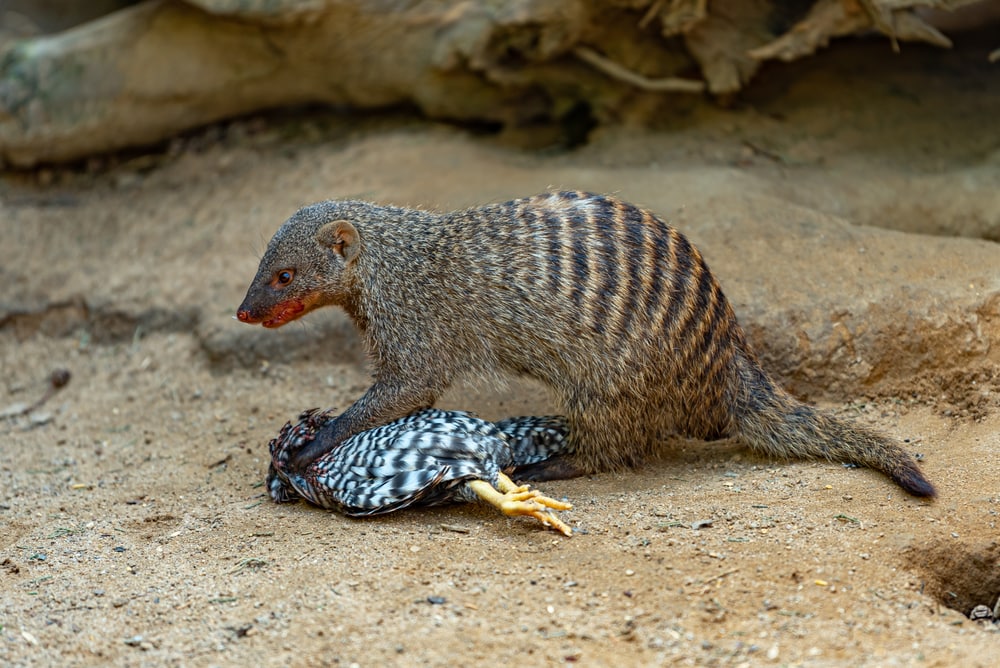
All mongooses are opportunistic omnivores. They eat a widely varied diet that is dependent upon what food sources are available and where in the world they’re located.
Small Indian mongooses normally prey on insects like grasshoppers, dragonflies, beetles, and ants. Like other mongoose species though, small Indian mongoose will also eat small animals, birds, snakes, amphibians, small mammals, fish, grass, seeds, and fruit.
In many places, mongooses are regarded as egg thieves. Like raccoons, they’ll raid the nests of birds and reptiles, feasting on the eggs inside. In some parts of the world, this puts them in conflict with people who rely on those eggs for food, causing them to be considered nuisance animals.
Life Cycle
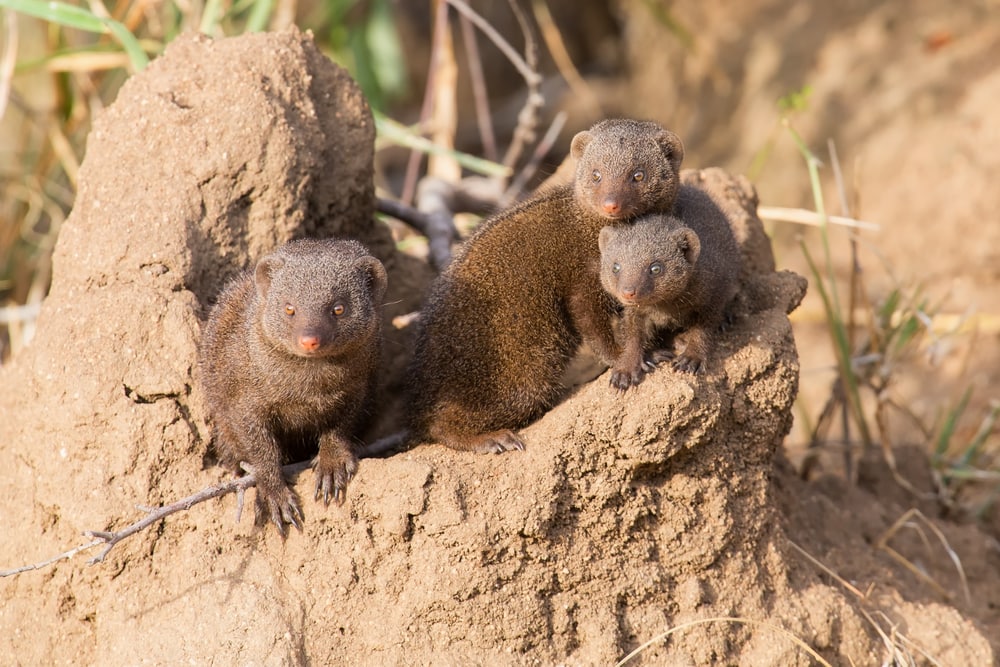
Mongooses give birth throughout the year, with females averaging two litters of two to three pups each year. By five weeks of age, pups are weaned off of their mother’s milk, and by ten months of age, they reach sexual maturity.
In the wild, small Indian mongooses have a life expectancy of between 3 and 4 years. They spend the beginning of their lives under the direct care of their mothers, but will also live in groups if enough food is available.
Social Habits
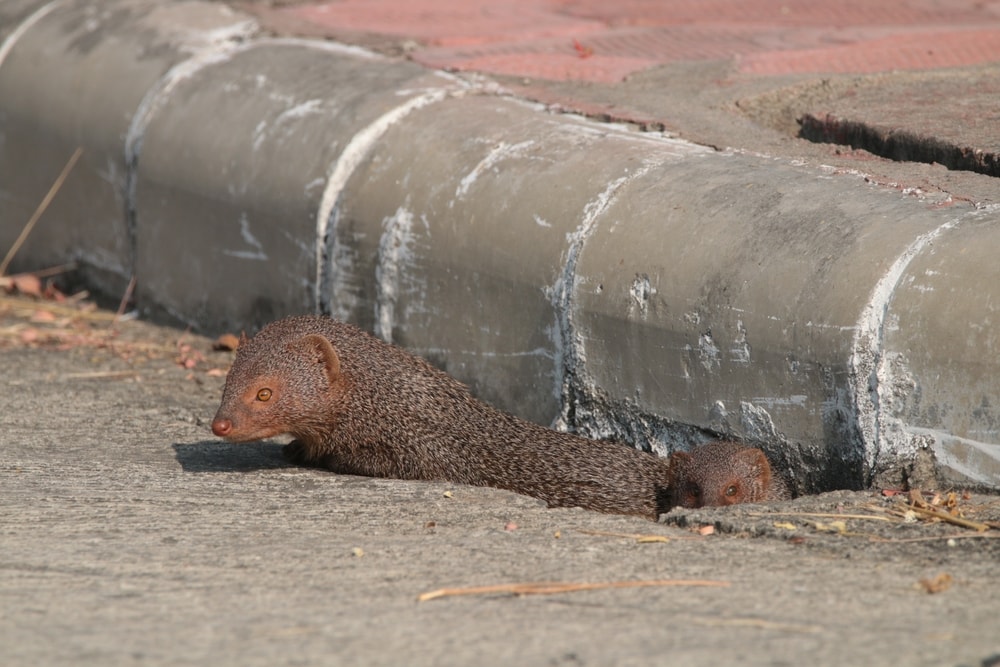
Some mongooses are incredibly social and live in groups of up to 50 individuals. They’re mainly active during the day, resting inside burrows at night.
Mongooses are very good at communicating with each other. They constantly chatter at each other in what can almost sound like human speech. The syllables they use warn each other of danger, help them hunt prey, and direct their movements across the landscape.
You May Also Like: Learn These 13 Types of Otters and Where They Live with Photos, Facts, Guide, and more!
Mongoose in Hawaii: How Did They Get There?
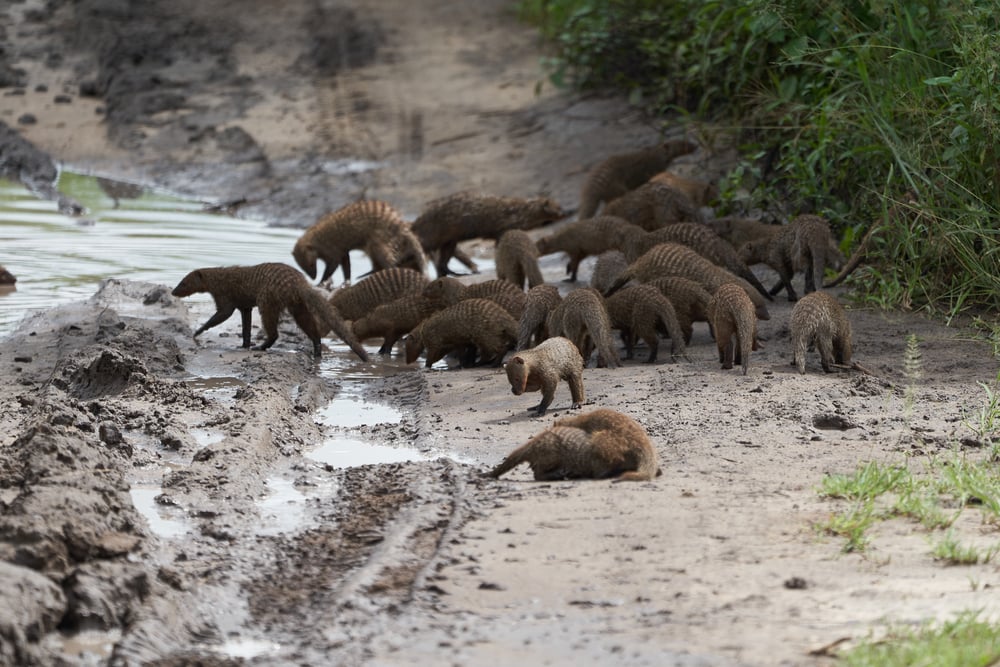
To explain how mongoose got to Hawaii, we have to go a little further back in time. The warm, humid climate of the Caribbean made the region perfect for sugar plantations and therefore a gold mine for the sugar trade worldwide.
Sugarcane attracts rats, which destroys crops and causes huge losses. Plantation owners needed a solution for controlling rat populations. Mongooses were thought to be great pest-control animals, so they were brought to the Caribbean to kill off rats and snakes.
In 1872, small Indian mongooses were shipped from India to Jamaica. In some places, they did reduce rat populations, but the mongooses also had negative impacts on native species, such as snakes which have largely been extirpated across many island chains.
The offspring of small Indian mongooses in Jamaica was taken to Hawaii to again try to control rat and insect species that damaged sugar crops. Only the islands of Lana’i and Kaua’i didn’t bring mongoose to their shores.
There are different stories about why those islands didn’t take on mongooses, but the simplified version is that the native people refused them and threw them overboard.
Environmental Effects of Hawaiian Mongoose
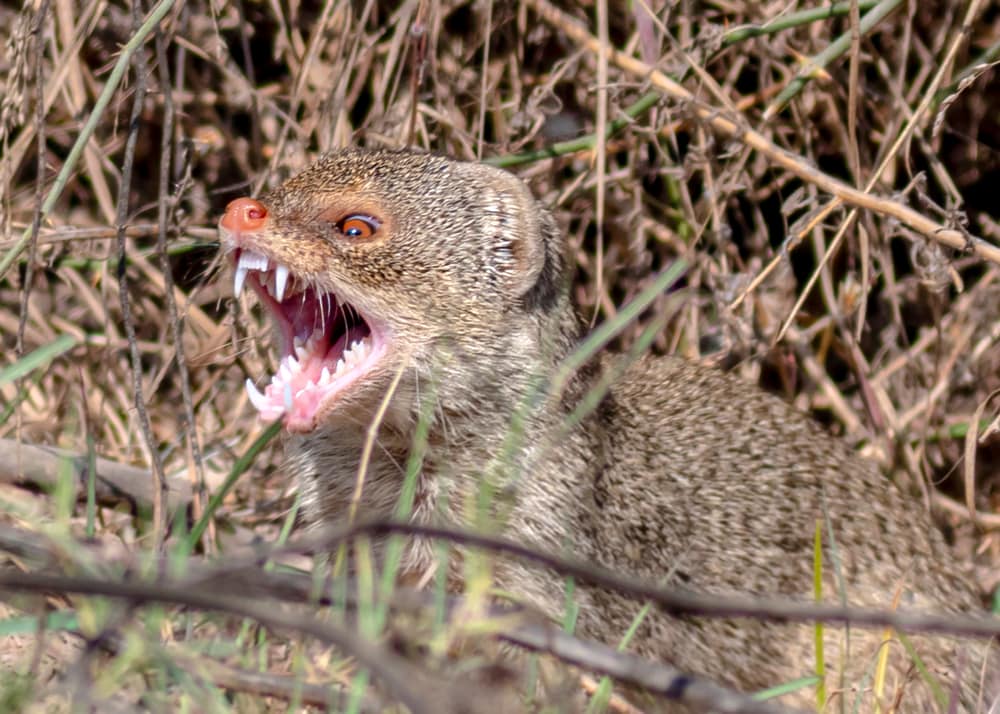
Mongoose introduction achieved varying degrees of success when it came to rat and snake control. In the Caribbean, some native snake species were completely wiped off of some islands.
Mongooses are omnivores and are very opportunistic. Their main diet, especially the small Indian mongooses, isn’t rats and snakes. So while they did control those populations to some extent, they also found food sources elsewhere.
The small impact on rodent populations ended up being far outweighed by their massive impact on native species of birds, turtles, and other animals. This is mainly due to mongooses eating eggs.
Nesting sea turtles have to come ashore to lay their eggs. Mongoose can easily go find nests, dig them up, and destroy or eat entire nests worth of eggs. With a low survival rate among baby turtles already, this is a pressure that the turtles can’t account for.
Mongooses will also kill and eat birds and their eggs. These affected Hawaiian bird species include 8 federally listed endangered Hawaiian birds, such as the Hawaiian crow (‘alalā), petrels (ʻuʻau) and Hawaiian goose (nēnē).
Like most invasive species, mongooses don’t have natural predators in Hawaii. There aren’t many larger, land-dwelling species on the islands that could eventually fill that role.
The Hawaiian Islands provide a very safe habitat. Outside of the water, predators just don’t exist. This means for mongoose populations the only possible control exercised on them comes from humans.
Hawaiian Management of Mongoose and Hunting
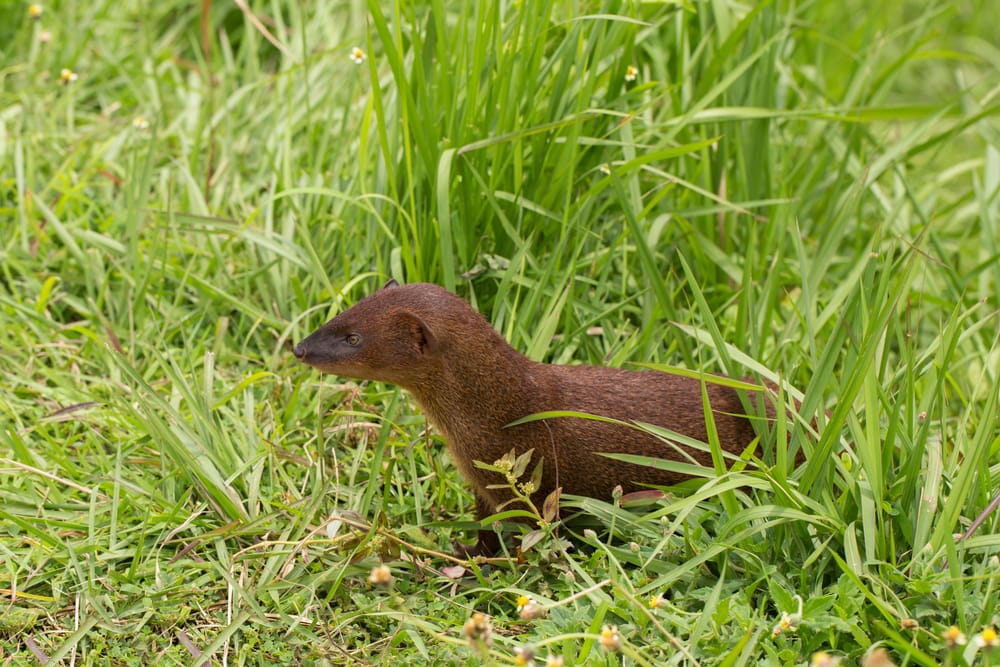
Hawaii has a strange management strategy for mongoose within the islands. Here’s a list of penalties for all actions and what people are allowed to do with mongooses in Hawaii here.
It is illegal to introduce, keep, or breed any mongoose species in the state without a permit. Permits aren’t issued for the islands of Lana’i and Kaua’i. Penalties for violating this law are fines ranging from $250-$1,000 per mongoose.
Hawaii has a hotline for reporting any sightings of mongoose on Lana’i and Kaua’i. On the other islands, it isn’t even a requirement to report sightings.
Mongooses in Hawaii have no protection from human action. It’s perfectly legal to hunt or kill mongooses in any way that person chooses (within reason and outside of animal cruelty). The government in Hawaii does run animal control programs for trapping nuisance populations of mongoose, but I could not find examples of this.
While they do have soft fur, mongooses aren’t a normal target for hunters or trappers. It also doesn’t seem that mongooses have built substantial populations on the islands. These things combined seem to be the reason there aren’t substantial management programs in place.
It seems the majority of management efforts are essentially just trying to establish whether mongooses have made their way to other islands and monitoring their ecological impact.
Interactions With Humans
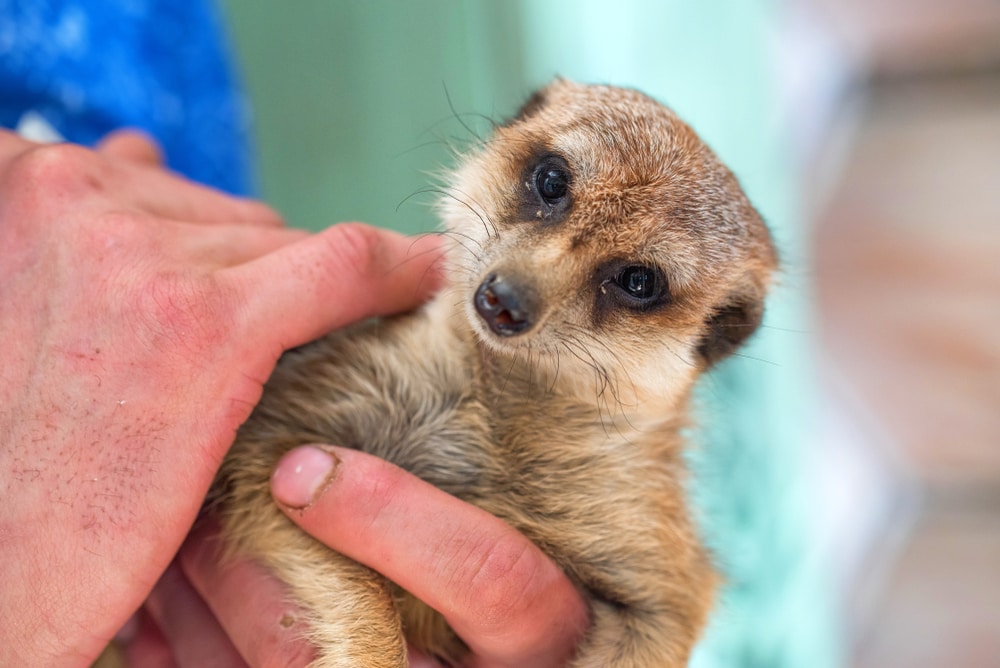
Mongooses aren’t a threat to humans and will just run away in nearly every case when they encounter a person. If they’re cornered, they can become aggressive and will bite. While this is painful and could require stitches, they still don’t qualify as dangerous animals when it comes to people.
You may also like: Learn How Do Whales Sleep and Know What Happens to Their Bodies While They Are Sleeping: With Images, Facts, and More!
Threats to Mongoose Populations Worldwide
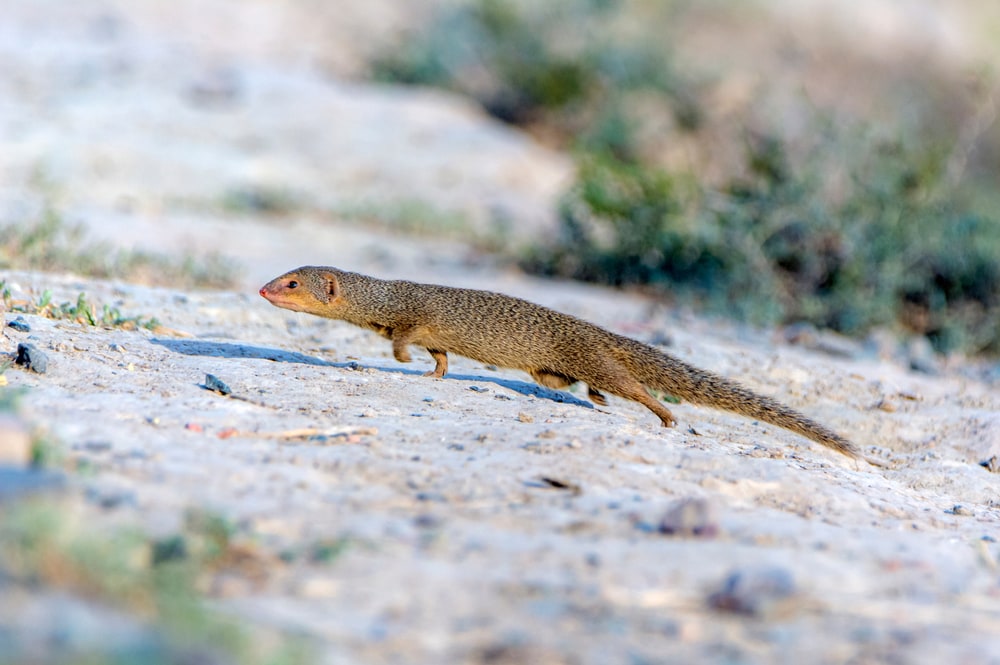
Worldwide, mongoose species are relatively stable. According to the IUCN Red List, some species are declining, however, all of them are of least concern, vulnerable, or near threatened. No mongoose species are listed as endangered or even threatened.
For the most part, this is because mongooses are very adaptable and have wide ranges. Localized populations face different threats and could be subject to localized extinction despite worldwide population stability.
Human impact is one of the largest threats to mongooses. Pollution, habitat destruction, and population fragmentation can all contribute to localized or widespread population decline. Plastic pollution is a major problem worldwide that can choke out entire ecosystems.
Damming of rivers and draining of marshes to make way for urban environments completely destroys or alters the habitats that mongooses are found in. Generally, mongooses don’t positively adapt to urban environments.
Mongooses aren’t kept as pets normally, they simply form simplistic bonds with people with whom they come into contact frequently. It wouldn’t be uncommon for a mongoose to get used to a person whose garden they enter to eat bugs regularly.
Environmental impacts can have huge effects on mongoose populations as well. Climate change is a major factor in these shifts and phenomena. Climate shifts can cause natural disasters such as droughts, which kill off wild grasses and dry out marshes that mongooses call home.
The introduction of new predator species can vastly impact mongoose populations. Large snakes, mammals, and reptiles can decimate mongoose populations by killing off young. Since mongooses breed frequently and reach maturity early, this is less of a problem for mongoose species.
You May Also Like: Check Out These 10 Common Sharks In Hawaii That You Should Know About with Photos, Guide, Facts, and more!
Hawaiian Mongoose FAQs

Do Mongooses Kill Snakes?
Mongooses do kill and eat snakes. Though the fantasy descriptions of their battles are over-the-top, snakes are a fairly common food source for mongoose in many regions of the world.
Mongooses are long and nimble creatures, and their agility allows them to avoid being bitten while waiting for an opening to seize the snake in its jaws.
What are the natural predators of mongooses?
In their native environment, mongooses have plenty of natural predators. Hawks, large snakes, jackals, and cats are all typical predators that feed on mongooses.
When it comes to Hawaii, these predators simply don’t exist. Hawaii isn’t home to any natural predators of mongoose, and the terrestrial animals that do exist in Hawaii aren’t suited to eating them.
Why do people hunt mongooses?
People do hunt mongooses around the world, but they aren’t a widely popular game species.
When hunted for sport, mongooses are usually made into full-mount trophies. The process involves full-body taxidermy. This doesn’t seem to be a very common occurrence however and doesn’t have a real impact on mongoose populations.
The majority of people hunt mongoose for bushmeat. While this is a form of poaching, many communities rely on bushmeat to survive, and it makes up an important part of their diet. Check out our article about poaching to learn more about it and why people do it.
You may also like:
Discover the different species found Hawaii here:










